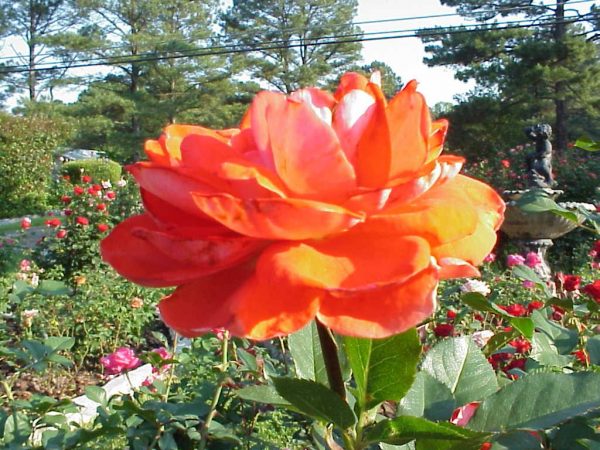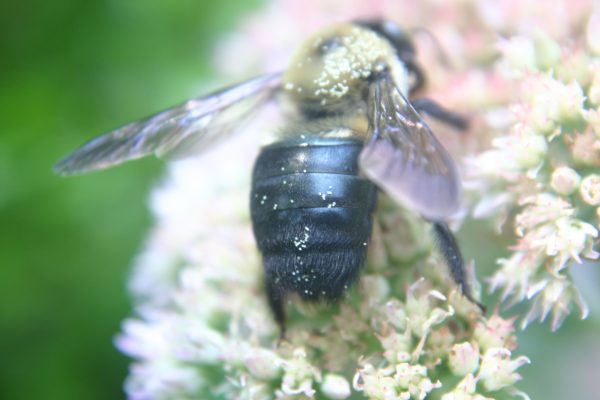Rose – General Care

No flower in the world is as popular as the rose. Gardeners can choose from hundreds, perhaps thousands of different types of roses. For this discussion, roses will be simply divided into bush roses and climbing roses.
General culture is the same for both and this will be discussed first:
Roses can be planted in November through March. Roses are graded for retail sale.The #1 rose plant is twice as big and usually twice as vigorous as a #2 rose. Buy the #1 plant if at all possible.
Dig a large hole and spread the roots in all directions. Make sure to plant high enough so that the graft union, the swollen area of the main stem, is 1″ above the soil level. Water thoroughly to settle the soil around the plant. Remove any weak or broken canes at this time.
Roses should be mulched with chips, pine straw, leaves or other material and they should be watered regularly during their first year.
Fertilize roses monthly from March until September. Any general purpose fertilizer will do. Three tablespoons of 10-10-10 fertilizer are adequate for most plants but plants over 5′ tall respond to 5 tablespoons per month.
Two major diseases affect roses: black spot and powdery mildew. Black spot shows up as small black spots on the leaves which cause the leaf to turn yellow and fall off. Sometimes the entire plant will defoliate. Control black spot with a fungicide (click for sources) which is labeled for use on roses. Weekly applications should begin in spring when new foliage appears. If you wait until summer, your roses will be weakened by the loss of leaves.
Powdery mildew covers the leaves with a whitish gray powder. Leaves and flower buds may be distorted. Excess moisture from rain or overhead watering promotes this disease. Use a fungicide (click for sources) labeled for powdery mildew control at the first sign of this disease.
Aphids and thrips are insects that attack roses. Thrips cause flowers to have ragged, blackened edges. They feed on the bud before it opens. Aphids suck plant juices from the underside of the leaves, spreading disease and weakening the plant. Either insect can be controlled with rose insecticides.
Shrub- and bush-type roses should be pruned in spring just before growth begins. The Atlanta Botanical Garden usually schedules a rose pruning day in early March. Plan to attend this if you need advice from expert rosarians.
Prune bush roses in February by removing weak canes, leaving four to six main canes. Each of these main canes should have three vigorous shoots arising from them, 6″ to 12″ long.
Prune climbing roses immediately after spring flowering. Remove older canes which produced this year’s flowers, allowing new canes to develop for next year’s blooms. Five or six healthy canes are generally all that are needed to produce a beautiful show.
Rose Culture for Georgia Gardeners

rose













